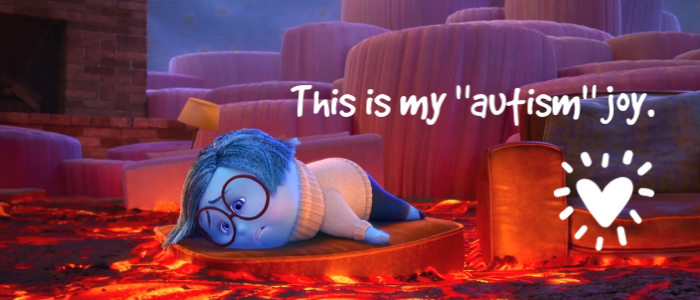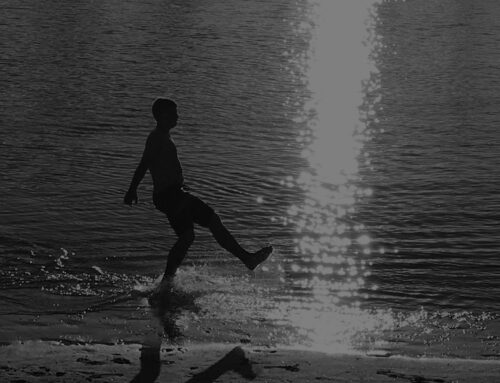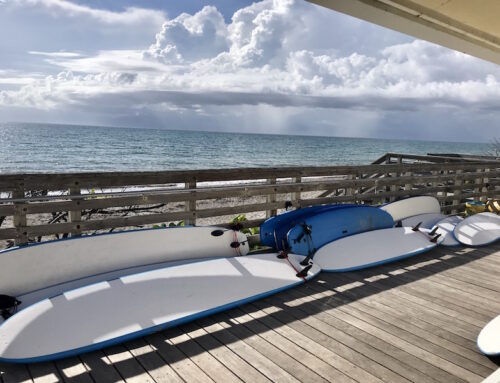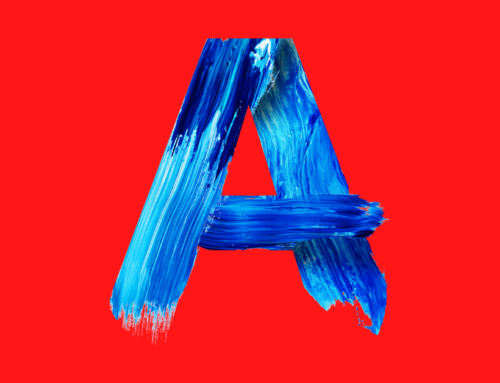
Once again, thanks to John Lasseter, I’ve left a Disney Pixar film- reeling (pardon the pun). I’ve been crying my eyes out for the past hour and forty-two minutes and I’m not sure if it’s because (a) I could never, EVER, EVER conceive of anything more clever than Inside Out if my life depended on it (although I totally predicted from the second Bing-Bong came on the screen that he had to be “erased”) or (b) I spent the duration of the film inside my own head, analyzing my kid’s head, pleading I wouldn’t conclude that Sadness dominates his helm.
My first clue should have come when my 10.99 year-old son J.R., who has autism, disappeared from my sight as I waited in long ticket line. Kids with autism don’t have time to wait, so I sent his younger brother after him (another cruel irony) and he was found physically latching onto the movie poster’s image of the Sadness character. “Sadness is sad, but she sure is cute mom,” exclaims the boy who is about to consume an Icee larger than my head, and more expensive than my designer sunglasses. I shake my head because I would have bet the farm my son would have found Anger an absolute hoot. Note to self: return J.R.’s birthday gift to Target (Disney Pixar Anger action figure) before he sees it and well, gets angry.
Getting seated and settled in the theater is no easy task- nosebleed seats: check! Loud, inappropriate comments from J.R. right on cue with the quiet time in between previews: check! Hey, I’m sure my son simply screamed what was on every other kids’ mind- Underdogs IS going to “SUCK!!!!!!!!!!!” Oh Joy, how the autism mom relates to your character. Keeping Disgust, Anger, and Fear in check certainly is a full time job when your son feels most at home on Honesty Island.
Inside Out reveals, in THE MOST hilarious way, how a traumatic life event can send one’s already hardworking emotions into overdrive. And how Pixar can’t resist a sequel teaser, yeay! Unfortunately, I found it difficult to watch the film’s opening scenes, which feature adorable main character Riley in her very early years. Why? Like Riley, J.R. must have dozens of “core” memories of his towheaded escapades. What had me distracted enough to not notice my boys’ fight over the popcorn had come to physical blows? Agonizing over what color the bulk of my autistic son’s childhood memories might be. How many of his “orbs” were sadly blue? I can’t imagine not being able to speak was much fun for him. Which orbs were accidentally touched by blue and what role could I (supposedly guided by Joy, remember?) have played in their classification? Translation: many autism moms go to sleep at night, drowning in guilt. This one prays J.R. forms an incredibly deep chasm for a memory “dump.”
Before I allow myself to ruin the movie in my own mind, one headquartered by Joy with Fear gripping tightly to the emergency break, Riley’s mind reveals its Islands. Islands are emotion-sustaining areas of the brain that require joyful memory “feeds” (pun intended this time). How creative. Riley has an island for family, friendship, and even hockey. In that moment, I can’t help thinking what other moms like me will be thinking at this point in the film- what the hell kind of brain islands does my kid have? Hahahahaha! This will be fun! Let’s see, J.R. would require a full on archipelago of sea life Islands, for starters. No wonder his head is so big. Oh and Train Island is a must yet should not be confused with Inside Out’s Train of Thought. And thank you Disney Pixar for portraying even a typical child’s mind with an unpredictable rattletrap for a train of thought. Bravo.
The minute I am reminded that this film is a comedy (thank you Bill Hader), Riley’s islands start crumbling one by one. Her sadness and frustration over moving away from her friends leads to anger. Bye bye Friendship Island. Hockey Island goes once she realizes she can’t get her head in the game. And right at the point where more emotionally stable moviegoers are supposed to feel touched, I start the ugly cry (with noises). My eight year-old is able to dry my tears as he simultaneously screams “SHUT UP J.R.!” who keeps loudly asking for the train scenes to come back. I call Mayday on Brother Island. Does my son even have a Friendship Island? Does J.R.’s own Personality Island block the sun, making it impossible for any other islands to survive? This display of the fragility of the typical human psyche has me feeling darned hopeless about my atypical son’s future.
Enter Sadness. The mere thought of her character should put me over the edge, right? Wrong! Until Joy began physically dragging sad-sack Sadness through Riley’s Long Term Memory, I hadn’t noticed that J.R. lit up every time Sadness spoke. He was glued and in hysterics, as if to say “Amen!” every time Sadness foiled Joy. I was so thrilled he found her entertaining, and he hadn’t once asked to leave the movie. Forget the fact my kid thinks it’s hilarious to be anything but happy. Then comes the line from Joy that ends with “because of Sadness.” Just when she thinks Sadness is screwing up Riley’s memories, she realizes all of Riley’s core memories are results of sadness, alleviated by happiness. A happy memory of a warm embrace is the result of a no good, awful day. This poses the question Does one know true joy without having experienced sadness? One does not. P.S. I am now crying so hard, people (ok, children) are pointing and laughing at me. My neurotypical son wants to move his seat. To Jurassic World.
Raising J.R. has been difficult. I’ve said many times that my memories of his first four years are sketchy at best. My memory “Abyss” may have saved my life, and I should probably thank my brain for holding onto a few distracter memories. 1970’s commercial jingles are the best! And if I had a handful of joyful orbs to peer into, I promise you every positive core memory is a byproduct of sadness. Every single one of my son’s milestones produced insane celebrations, because I’d cried so hard knowing they’d arrive so late. I count three year-old J.R. saying “Pur-ple Cat” as one of the best days of my life. The happiness associated with his first “A” in Language Arts this year eclipsed the tears of receiving six months of failing grades. I had actually forgotten how bad they sucked.
J.R. is on to something as he recognizes and even chooses to embrace sadness at times. It shows me how much happiness means to him- it can be fleeting for some children with autism and he must miss it. It gives me hope to think his successes are felt more deeply because in general, things don’t come that easy for him. To prove this, just observe his giddiness as he successfully operates a microwave oven. I have hope for J.R.’s memory orbs, and God would I give anything to visit his mind’s Islands. Even Sanjay & Craig Island.
I’ve always taught J.R. that it is okay to feel sad. Now I know it’s more than okay. He’s permanently placed Joy as my navigator, regardless, and Sadness knows we’ve earned it.
Now I must go and place an icepack on my eyes, I am happy to say.





Islands? Orbs? Colors? Anger? Sadness? QUE? #clueless Forgive my lack of Pixar knowledge. I only know the opening scene Dylan rewinds hundreds of times. I haven’t seen the movie, but GREAT POST!
I like to think our kids are mostly happy in/on/en their own rainbow bubble and we are the ones with the problem (which explains why we are the only ones that get excited by the milestones while they look at us like we are insane). What did Jackson think? I would have totally left to see Jurassic with him. Surprised? Ha!
And yeah, thanks for putting this song in my head for the rest of the day….. “JOY and PAIN….are like SUNSHINE and RAIN!” https://www.youtube.com/watch?v=8hBaOlNVl9o
I can’t WAIT for you to see the movie, Brenda. The characters are great, and the emotion BLONDE is clearly the most significant. Her greatest contribution to the film’s overall theme is displayed when…hey look- a SQUIRREL!
Now I’m crying … And I haven’t even seen the movie … And I’m at work … And my “wall” to the hallway is glass and everyone is looking at me … And they probably assume it’s something my boss did and are plotting something to avenge my tears …. That made me laugh. Happy again! Guess your joy/sadness connection is proven yet again!
Carrie you are so kind. You laughed, you cried, and risked having people think you are mentally unstable. For me. My Friendship Island is officially complete.
Kristi and Bren,
Eric and I saw Inside Out today. He has been waiting for it to come out for a year. Eric was totally captivated by “the voices in his head” and felt some sort of kinship with Riley, even before seeing the movie. My cousin’s husband works as a computer engineer for Pixar, and they have been super high about the movie for a long time, so we were primed.
I think a lot of it went over Eric’s head, but he said the movie did not disappoint. I was bawling at the short “Lava” film and by the time Bing Bong came along, I was a goner. Eric was just captivated by all the visuals and the general idea. He especially loved the clips in the credits where we see the emotions of other people and animals.
I am at a very emotional period in my life. I am trying to figure out how to view my happy core emotions from my now failed marriage in some sort of positive way. Sadness defines me right now too. But I have the reverse, I used to know joy and now that it is gone, sadness reigns.
Thank you so much for your post. I truly enjoyed the way you expressed yourself and identify with you maybe not at the same level, because I do not know what it is like to have an autistic child or the challenges that come with it, but as a loving mother who struggles to want to do the right thing, the best thing for her children, and messes up along the way. The guilty emotion, I know it very well. Although we all have varying degrees of difficulties we face throughout life, we can rest assure we are not alone in this. I have yet to see the movie. My three girls have seen it with their cousins and couldn’t stop gushing about how wonderful it was and how much they cried. I’ve been wanting to see the movie and plan on seeing it soon. I know it will be a useful tool for discussion with my kids. Thanks again for the laugh and the cries produced by your review. God bless.